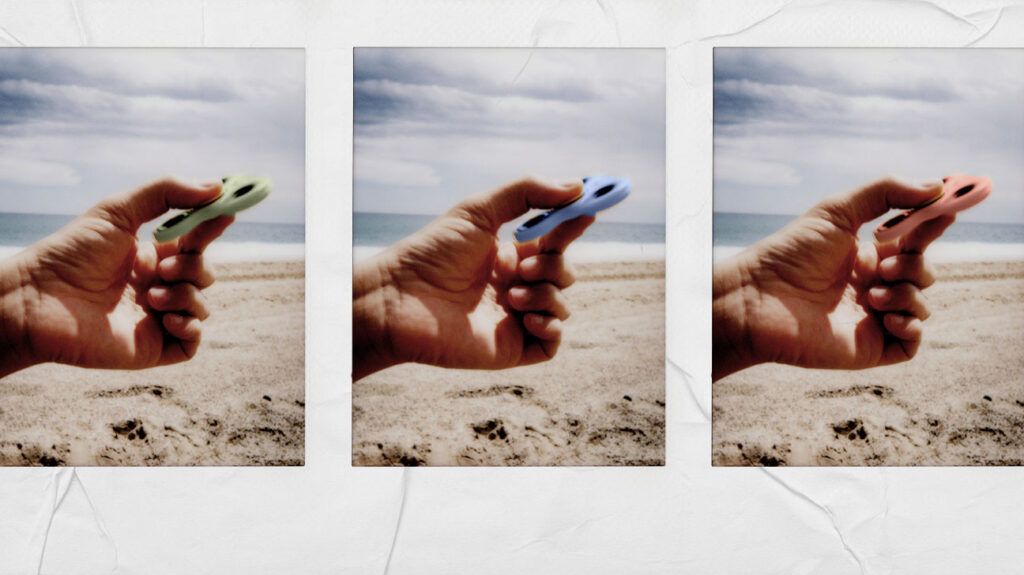Fidget toys can help some people with attention deficit hyperactivity disorder (ADHD), but their effectiveness varies depending on the individual and the type of ADHD they have.
A fidget toy is a small, handheld object that a person can fiddle with to provide an outlet for restless energy and nervousness.
These toys may improve concentration, reduce stress, and provide sensory stimulation, particularly in people with difficulty focusing.
This article examines whether fidget toys can benefit those with ADHD, including the different types, where to buy them, and other ways to manage ADHD symptoms.

The effectiveness of fidget toys for ADHD
It may also involve personal preference. Some individuals prefer tactile toys, such as stress balls, while others benefit more from something such as a fidget spinner.
ADHD
People with hyperactive-impulsive or combined ADHD are more likely to fidget excessively or have difficulty with self-control. Fidget toys may offer an outlet for the physical movement or sensory stimulation these individuals seek.
However, these toys could be a distraction and less beneficial for those with inattentive-type ADHD. These individuals are more likely to have difficulties staying focused on tasks.
With these factors in mind, further research into the benefits of fidget toys on people with different types of ADHD is necessary.
Does age affect the benefits?
According to a
For children, these toys can also be a tool for sensory play, which is important for their development.
However, a
While not as common among adults, fidget toys can still be beneficial. Adults with ADHD might find that fidget tools help them maintain focus during meetings, while working, or in social situations where they might otherwise feel restless.
However, the best type of fidget toy differs for adults who favor more discreet options.
Fidget toys come in various forms, each offering different sensory experiences and potentially affecting ADHD symptoms differently.
- Fidget spinners: Fidget spinners are devices that rotate around a central axis. They can provide a focus point for excess energy and offer an outlet for stress or anxiety but may be visually distracting to others.
- Stress balls: These are small, malleable balls that someone can squeeze and manipulate in shape. They may
improve focus in people with ADHD. - Fidget cubes: These devices have various sides featuring different activities, such as buttons, dials, and switches. They cater to multiple sensory needs, but the noise from certain parts may distract others.
- Tangle toys: These are twisting sensory toys that a person can manipulate into different shapes. They are quiet and may be less distracting to others than some types of fidget toys.
- Sensory rings: These may have blunt spikes or spinning features to provide discreet sensory stimulation. However, some individuals may find these less engaging due to the limited variety.
- Flippy chains: These small toys typically feature bicycle chains or interlocking key ring chains. Like sensory rings, flippy chains typically provide a repetitive motion and limited variety in sensory stimulation.
- Slime or putty: Slime comes in various textures to offer tactile stimulation. However, it can be messy and distracting to others, which may limit its use in environments such as classrooms.
- Magnetic balls: Magnetic balls are small and strong. People with ADHD can use them to create shapes. However, they may be distracting to others and easy to lose.
Each type of fidget toy offers unique benefits and potential drawbacks. The key is to find one that meets the individual needs of the person with ADHD, providing the right balance between sensory stimulation and distraction minimization.
Fidget toys are widely available online and in stores. They are typically not something someone would get directly from a doctor, although some healthcare professionals may recommend them.
Some stores may specialize in educational and therapy tools, including fidget toys. These stores may feature a curated selection for individuals with ADHD and other processing disorders.
However, many conventional toy stores now carry a range of fidget toys.
Generally, managing ADHD
- Stimulants: These are the first-line medications for ADHD and work by increasing levels of certain neurotransmitters in the brain. Examples include methylphenidate (Ritalin, Concerta) and amphetamines (Adderall).
- Nonstimulant medication: For those who do not respond well to stimulants, nonstimulant medications, such as atomoxetine (Strattera) or certain antidepressants, can be effective.
- Cognitive behavioral therapy (CBT): CBT may help a person with ADHD develop strategies to change negative thought patterns and teach skills to manage symptoms.
- Behavior management therapy: Doctors
may recommend behavioral therapy for children with ADHD. This technique involves behavior modification techniques such as positive reinforcement and structured routines. - Lifestyle changes: Doctors may also recommend certain habits and lifestyle changes to manage ADHD symptoms, including regular exercise, a balanced diet, and good sleep hygiene.
Fidget toys may offer benefits, such as increased concentration and an outlet for restless energy, for some adults or children with ADHD. However, research provides mixed results, and further studies are necessary.
Fidget toys are a supplementary tool, not a replacement for other ADHD management strategies or treatments.
People with ADHD can speak with a healthcare professional to create a management plan that suits them. They may use fidget toys in conjunction with medication, behavioral therapy, or other interventions.
